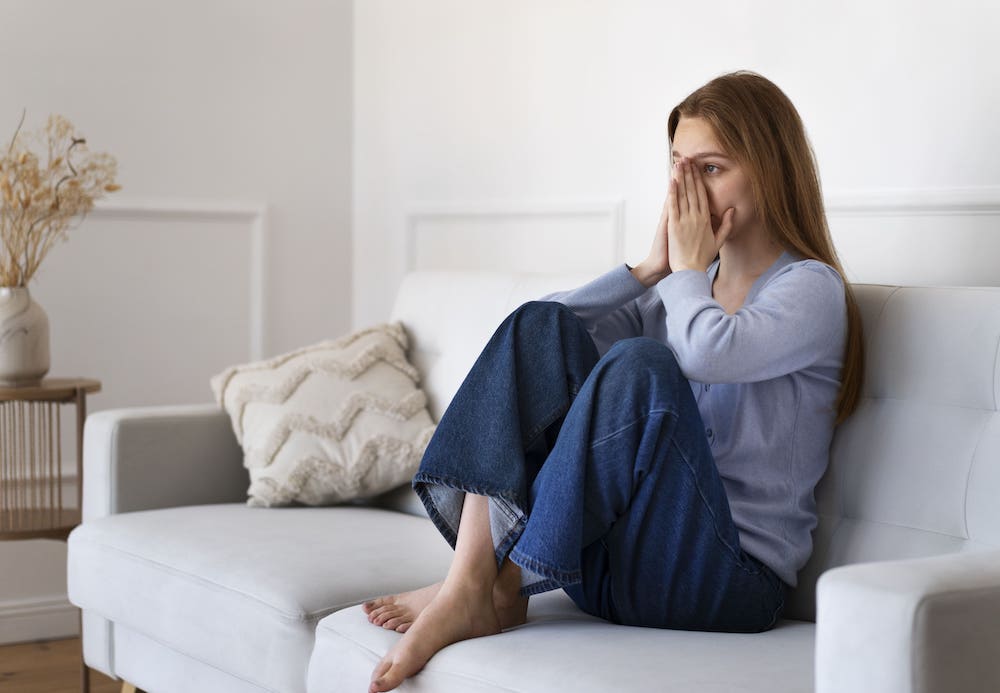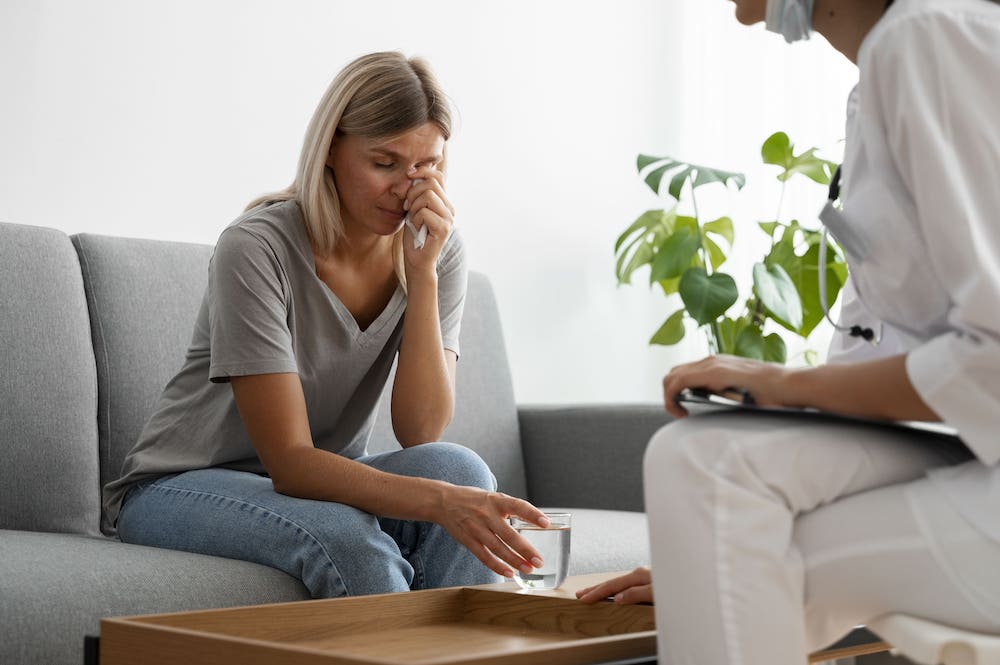Anxiety impacts 19.1% of adults in the United States. Classified as “highly treatable,” you can use grounding techniques for anxiety that will prepare you to better deal with periods of high stress in your life.
What is grounding for anxiety?
Grounding is a way to help you:
- Distract yourself from the feelings of anxiety
- Refocus and remain in the “present”
If you want to break free from anxious feelings, you can use the strategies that are outlined below to rebalance your mind and remain calm.
Announcement. Grounding exercises for anxiety equip anyone with high stress and anxiety with the toolkit they need to counterbalance the disruptive conditions that they experience when they’re anxious. The techniques below will help you find a natural, constructive way to fight back against the rapid heartbeat, sweating, and emotions that you’re feeling.

Grounding Techniques for Anxiety Management
Anxiety impacts everyone differently. For many people, the experience is unwelcome, but it doesn’t stop them from living their everyday lives. Others have such intense attacks that they stop doing things that they love, such as:
- Going out to eat
- Maintaining a career
- Spending time with friends
The right grounding exercises for anxiety can help you “break the cycle” and start to take your life back.
We’re going to explain how to ground yourself during an anxiety attack using the most common methods and techniques, starting with physical grounding.
Physical Grounding Techniques
A physical grounding technique allows you to use one of your senses to help you calm yourself down and find relief from an anxious moment. You can do a few things:
- Deep Breathing Exercises: Breathwork is one of the best grounding skills for anxiety because you’re always equipped with your breath. Focus on your breath when inhaling (through your nose) and fill your belly, hold for two seconds, and then exhale out of your mouth until your lungs are empty.
- Progressive Muscle Relaxation: PMR involves the tensing of muscles and then releasing them slowly. The key is to go through PMR slowly to help you relieve your symptoms of anxiety.
- The 5-4-3-2-1 Grounding Technique: One of the most famous techniques is the 5-4-3-2-1 method. Find your breath and then identify 5 things around you, 4 things you can touch, 3 things you can hear 2 smells, and 1 taste. You’ll successfully distract your mind using this technique.
These three techniques are the most common methods to help people get through times with high anxiety. You can also try other physical grounding techniques, such as holding ice in your hand, focusing on the taste of a beverage or food item, sprinting for 30 seconds, or even focusing on positive sounds around you.
While a lot of patients use this grounding method for anxiety, you can use mental grounding techniques with great success.
Mental Grounding Techniques
Mental techniques are preferred by someone who cannot engage in some of the physical options above. You can use the following strategies to change your perspective and start looking at the current anxious state in a new light.
You can try to use:
- Visualization Techniques: Many forms of visualization are used to help relieve anxiety, such as picturing yourself in a serene location (like a beach). You can also visualize people talking and then closing the door on them to silence the noise in your mind.
- Mindfulness Meditation: Mindfulness is a form of meditation that can be highly effective and is something everyone can do. You only need to focus on something around you, such as the sound of birds chirping or the food that you’re eating. Visualize the flavors in the food, the taste, the sun growing the food, water nourishing the food, and embracing each taste.
- Positive Affirmations: Create affirmations for the anxiety that you feel. “I am prepared,” “I can handle this,” or any other affirmation that you can keep saying in your mind can help you get through episodes of anxiety.
Along with physical and mental grounding techniques, you can also rely on soothing techniques to help you.

Soothing Grounding Techniques
Self-soothing is an incredibly powerful approach to relieve anxiety and it involves really focusing on moments or things you’re doing. For example, you can sit with your dog to find some relief, or you can begin with:
- Sensory Experiences: Listen to music or nature to find a way to relax. A lot of people find relief when they listen to their favorite song, which helps break them out of their anxious moments and often makes them feel less overwhelmed.
- Creative Experiences: Engage in creative experiences to help ground you. Write down what you’re feeling or make a story out of it. You can also paint, draw or build something to help change your train of thought to something more positive.
- Nature and Outdoor Activities: Studies show that spending time in nature can help reduce stress hormone levels, blood pressure, and even anxiety. Go for a walk or just allow yourself moments of silence at your local park.
Knowing the grounding techniques that you can use for anxiety management is not enough to make a lasting impact on your condition. You need to find ways to integrate the methods above into your daily life.
Tips on Integrating Grounding Methods for Anxiety into Your Daily Life
Are you anxious? If so, integrating grounding techniques into your daily life is a necessity. You can use these methods even when you’re not anxious so that you’re better prepared for the day or night ahead.
Here are a few tips that can help you incorporate these methods into your life:
- Start the morning with positive affirmations or visualizing how the day will be peaceful and positive.
- Before and during situations where you normally experience high stress, use some of the techniques we discussed before the anxiety hits.
- Adapt your bedtime ritual to meditate and be mindful or use affirmations to ground yourself.
The key to success with all of these grounding techniques is that they’re best used as part of your daily life. If you can incorporate them into your routine, they’ll help you avert many of the anxiety-filled episodes that you experience.

Final Words of Encouragement
Grounding techniques for anxiety are a powerful tool that you need to incorporate into your life. Everyone can benefit from the methods above because being anxious can present itself at any time.
Positive, natural techniques will allow you to remain calm and in the present moment, even when you’re stressed or anxious.



